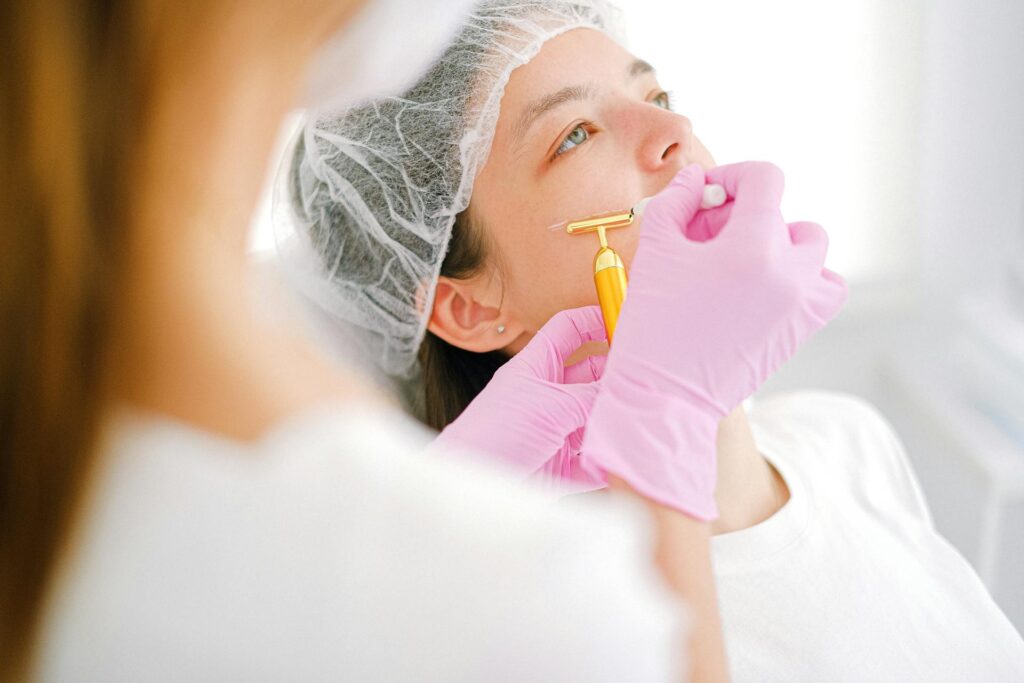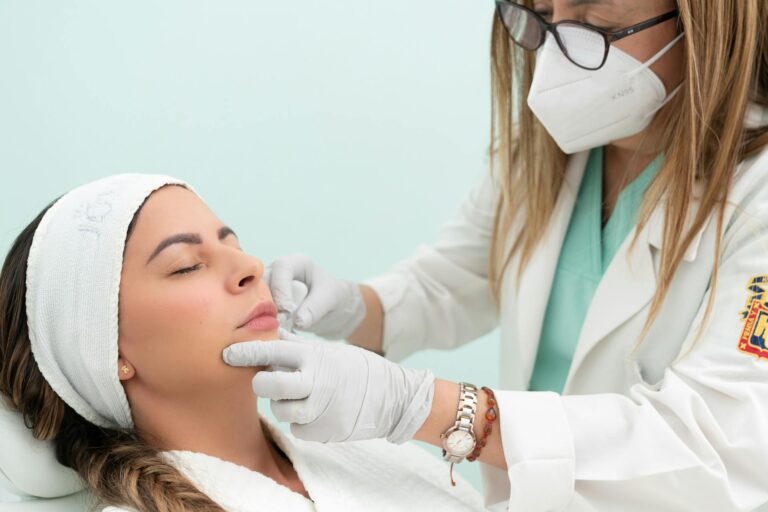
Botox has gained significant popularity as a solution for individuals seeking a more youthful appearance, as well as for those looking for relief from various medical conditions. But how often should you have Botox?
This article delves into the numerous benefits of Botox, which range from reducing fine lines and lifting drooping eyebrows to alleviating migraine headaches and managing excessive sweating. It also provides guidance on how often one should schedule injections, what to expect during treatment, and helpful tips for maintaining the results.
Furthermore, it addresses potential side effects to ensure that readers are fully informed before making a decision. Continue reading to explore how Botox can enhance both your appearance and overall well-being.
What Are the Benefits of Botox?

Botox, an injectable treatment derived from botulinum toxin, has gained significant popularity in the field of cosmetic enhancements, especially among those seeking solutions for ageing.
Its ability to reduce wrinkles, rejuvenate the skin, and improve overall facial aesthetics has established it as a preferred option for many individuals looking to enhance their appearance and keep up with beauty trends.
As a non-surgical treatment, Botox provides a convenient way to achieve a more youthful look without extensive downtime, making it an appealing option for patients across various ages and skin types. The cost of Botox in the UK reflects its value as an accessible and effective solution for enhancing appearance with minimal disruption to daily life.
1. Reduces Fine Lines and Wrinkles
One of the most sought-after benefits of Botox is its impressive ability to diminish fine lines and wrinkles, especially in areas like the forehead and around the eyes, commonly referred to as crow’s feet.
This treatment works by temporarily blocking the nerve signals that lead to facial muscle contractions, resulting in a smoother appearance of the skin. Many individuals notice that after receiving Botox, their skin not only appears more youthful but also feels rejuvenated, which can significantly enhance their overall confidence.
To ensure the treatment remains effective, it is crucial to adhere to proper post-care instructions. This typically includes avoiding strenuous activities and extreme facial expressions immediately after the procedure.
Additionally, incorporating a consistent skincare regimen tailored to one’s skin type can help prolong the results and promote overall skin health. This highlights the importance of protecting and nourishing the skin to maintain that fresh, vibrant look.
2. Lifts Drooping Eyebrows
Botox is quite effective for achieving a subtle lift of drooping eyebrows, offering an aesthetic enhancement that contributes to a more youthful and refreshed appearance. This minimally invasive procedure has become increasingly popular among individuals looking to enhance their physical appearance in line with their personal goals, without the need for more extensive surgical interventions.
By precisely injecting Botox into targeted areas around the brow, practitioners can create a natural-looking elevation. This approach is especially beneficial for those who feel that their expressions do not accurately reflect their inner vitality.
To ensure both the safety and effectiveness of the treatment, it is essential for individuals to consult with qualified practitioners who possess a thorough understanding of facial anatomy and a keen eye for aesthetics.
Such expertise not only helps achieve optimal results but also supports patients in maintaining their desired look over time, enhancing their ongoing aesthetic journey.
3. Relieves Migraine Headaches
Plus its cosmetic uses, Botox has proven to be an effective treatment for alleviating migraine headaches, offering relief to many individuals who suffer from chronic migraines.
This non-invasive procedure brings new hope to those who experience frequent and intense migraine attacks, often transforming their daily lives. Typically administered every three months, Botox works by inhibiting the release of specific neurotransmitters that can trigger migraines, resulting in a significant decrease in both the frequency and severity of these attacks.
Many patients express high levels of satisfaction with their outcomes, noting a marked improvement in their quality of life. It is essential to consult with an experienced physician, as developing a personalised treatment plan tailored to each patient’s unique needs greatly increases the chances of success.
4. Reduces Excessive Sweating
For individuals dealing with excessive sweating, known as hyperhidrosis, Botox injections can offer a notable reduction in perspiration, significantly enhancing both comfort and confidence.
This innovative application of Botox as an aesthetic treatment not only alleviates the physical discomfort associated with excessive sweating but also plays a vital role in improving the overall quality of life for those affected.
When considering this treatment, it is imperative to undergo a thorough assessment and consultation with a qualified professional to ensure both safety and efficacy.
By understanding how Botox functions to block the signals that trigger sweat gland activation, clients can better manage their expectations regarding the results. Educating patients about potential side effects and the necessity of follow-up treatments further establishes a solid foundation for achieving a successful therapeutic outcome, making this an appealing option for many seeking relief from hyperhidrosis.
How Often Should You Get Botox Injections?

The frequency of Botox injections can vary considerably from person to person, influenced by factors such as skin type, age, and individual aesthetic goals.
Many patients pursue Botox treatments primarily for wrinkle reduction and facial rejuvenation. However, the timing of these injections—often referred to as Botox maintenance—depends on how effective the treatment is and how long the desired results last.
Adhering to UK Botox guidelines is essential, as it ensures that patients receive the best possible care while also taking into account the potential long-term effects of the treatment.
1. Frequency Depends on Individual
The frequency of Botox injections is largely determined by personal goals, skin type, and the effectiveness of previous treatments, underscoring the importance of a customized approach for each individual.
Factors such as age, lifestyle, and skin elasticity play a significant role in how the body responds to treatments. For instance, younger individuals opting for Baby Botox, a subtler version of traditional Botox, may enjoy more elastic skin, allowing for longer intervals between sessions. Meanwhile, those with mature skin might require more frequent touch-ups to maintain their desired results. Additionally, an active lifestyle or frequent sun exposure can influence the longevity of the treatment’s effects.
Consulting with an aesthetic expert is essential to evaluate these factors and create a personalized treatment plan tailored to individual needs and outcomes.
2. Maintenance Schedule for UK Residents
For residents in the UK, following established Botox guidelines is essential for determining a safe and effective maintenance schedule for injections. Typically, these treatments are recommended every three to six months; however, individual needs can vary greatly.
Regular consultations with a qualified practitioner are crucial for assessing how one responds to treatment. These discussions ensure that any changes are documented and thoroughly reviewed.
This ongoing dialogue facilitates a personalised approach that takes into account factors such as skin condition, muscle activity, and the patient’s medical history. A careful analysis of past treatments helps to minimise risks and enhance safety measures, ultimately optimising results and patient satisfaction with the procedure.
3. Factors That Affect Frequency of Botox Injections
Several factors can influence how often one may need Botox injections, such as age, skin analysis, and the dosage given during each treatment session.
Understanding how these elements interact is essential, as they impact not only aesthetic outcomes but also the duration of the results. For example, an individual’s skin condition and its response to treatment can vary significantly, making it crucial for practitioners to evaluate and adjust the treatment plan as needed.
Moreover, the potential risks associated with Botox—ranging from minor bruising to more serious complications—underscore the importance of follow-up appointments. These sessions play a vital role in ongoing assessment, allowing both the practitioner and the patient to evaluate the treatment’s effectiveness, adjust dosages, and ensure that the treatment continues to be safe and beneficial over time.
What to Expect During a Botox Treatment?

It is important for new patients to understand what to expect during a Botox treatment, as this knowledge helps demystify the process and prepares them for the upcoming experience.
The journey usually starts with a consultation with a qualified practitioner. During this meeting, the practitioner will assess individual needs, discuss aesthetic goals, and develop a personalised treatment plan designed to achieve the best possible results.
Once the consultation is finished, the injection process involves precise micro-injections of Botox into specific facial muscles, which effectively reduces wrinkles and promotes facial rejuvenation.
1. Consultation with a Qualified Practitioner
The initial step in the Botox treatment process involves a comprehensive consultation with a qualified practitioner. During this consultation, the practitioner will review your medical history and perform a detailed skin analysis.
This important meeting is designed to create a solid understanding of your unique aesthetic goals and concerns. Throughout this time, the practitioner plays a crucial role in educating you about the various treatment options available, ensuring that you feel informed and comfortable with the decisions being made.
Maintaining open communication during the consultation allows for the treatment plan to be tailored to your individual needs while also addressing any safety concerns or potential outcomes. This collaborative approach ultimately builds a sense of trust and satisfaction, enableing you to feel confident in your choices as you move forward.
2. Preparation for the Procedure
Proper preparation for the Botox procedure is vital to ensure a smooth experience and achieve optimal results. This includes following safety precautions, staying well-hydrated, and adhering to a recommended skincare routine.
Plus these essential steps, it is important to avoid certain substances that may interfere with the treatment. For example, refraining from blood thinners such as aspirin or ibuprofen, as well as steering clear of alcohol for at least 24 hours before the appointment, can significantly reduce the likelihood of bruising.
After the procedure, patients should also pay attention to their aftercare. This includes avoiding lying down for several hours, refraining from intense physical activity, and limiting excessive sun exposure.
By following these practical tips, individuals can not only enhance the effectiveness of the treatment but also contribute to a more satisfying outcome.
3. Injection Process
During the injection process, Botox is administered through precise micro-injections directly into the targeted facial muscles. An experienced practitioner manages this process to ensure the optimal dosage and effectiveness of the treatment.
To achieve the best results, practitioners carefully evaluate each individual’s unique facial structure and muscle dynamics, as these factors significantly influence the necessary dosage.
By taking into account considerations such as age, skin condition, and specific areas of concern, practitioners can develop a tailored injection plan that leads to improved treatment outcomes.
Effective communication between the patient and practitioner is crucial in establishing realistic expectations regarding recovery time, which is typically minimal for Botox treatments. This allows individuals to quickly return to their daily activities. This personalised approach not only enhances the treatment’s effectiveness but also contributes to greater patient satisfaction.
How to Prepare for Botox Maintenance?

Preparing for Botox maintenance is essential for ensuring that the treatment remains effective and that clients continue to be satisfied with their results.
This preparation involves following specific aftercare instructions, staying adequately hydrated, and maintaining a consistent skincare routine.
By taking these steps, individuals can enhance the longevity and overall success of their Botox treatments.
1. Avoid Blood Thinners and Alcohol
In preparation for Botox maintenance, it is recommended to refrain from using blood thinners and consuming alcohol for at least 24 hours before the appointment. This practice helps to minimise the risk of bruising and other complications.
These substances can interfere with the body’s natural healing processes, potentially leading to longer recovery times following the treatment. By avoiding them, individuals not only prioritise their safety but also improve the overall effectiveness of the procedure.
Making informed decisions is crucial in understanding the risks associated with Botox. It is important to acknowledge that what may appear to be minor indulgences can actually undermine the desired outcomes and complicate the healing process.
By taking these precautions, individuals can significantly enhance their chances of achieving optimal results and ensuring the treatment lasts as long as expected.
2. Stay Hydrated and Eat Well
Staying hydrated and maintaining a balanced diet before the Botox maintenance appointment can have a positive effect on skin health and the overall outcomes of the treatment.
When considering self-care practices aimed at achieving and prolonging youthful skin, it is essential to understand that adequate hydration not only keeps the skin plump but also creates a solid foundation for optimal nutrient absorption. A nutrition plan rich in antioxidants, essential fatty acids, and vitamins can enhance collagen production, which is crucial for maintaining skin elasticity.
Incorporating a beauty regimen that prioritises healthy choices, such as adding more fruit and vegetables to one’s diet, can significantly improve the skin’s resilience and radiance. By embracing these holistic approaches, individuals can enjoy longer-lasting results from their cosmetic treatments, ensuring that their appearance reflects their commitment to comprehensive skin health.
3. Follow Aftercare Instructions
Following aftercare instructions after Botox maintenance is crucial for achieving the best results and reducing the likelihood of side effects. It is particularly important to focus on proper post-treatment care and staying hydrated.
After the treatment, it is generally recommended to avoid strenuous activities for at least 24 hours, as engaging in such activities can lead to increased swelling or bruising at the injection sites. Proper hydration is also essential, as it supports the body’s natural healing process and contributes to overall skin health.
Clients should diligently adhere to their personalised aftercare plans, as these guidelines are specifically designed to minimise risks while maximising the benefits of the procedure. By understanding the significance of these instructions, individuals can enhance their satisfaction with the results, ensuring a smoother recovery and longer-lasting effects.
What Are the Possible Side Effects of Botox?

Botox is generally regarded as a safe and effective treatment; however, it is important to be informed about the potential side effects that could occur. These may include temporary bruising, swelling, and, in rare instances, allergic reactions.
By understanding these risks associated with the treatment, patients can make well-informed decisions and be better prepared for any discomfort that might follow their appointments.
1. Temporary Bruising and Swelling
One of the most common side effects of Botox is temporary bruising and swelling at the injection site, which generally resolves within a few days following the procedure.
Understanding the factors that contribute to these effects can significantly improve the overall patient experience. Elements such as skin sensitivity, the location of the injection, and the technique used by the practitioner all play important roles in determining the extent of bruising and swelling that may occur.
A skilled practitioner not only strives to minimise these reactions but also takes the time to educate patients on effective aftercare strategies that can promote a quicker recovery. Proper aftercare is essential as it can enhance patient satisfaction by reducing discomfort and encouraging healing.
Utilising ice packs and avoiding strenuous activities after the treatment can help further reduce any potential swelling, allowing individuals to fully appreciate their rejuvenated appearance sooner.
2. Headache or Flu-like Symptoms
Some patients may experience mild headaches or flu-like symptoms after receiving Botox injections, with variations in both intensity and duration.
These reactions are often linked to the body’s response to the injection process, as the treatment involves introducing a neurotoxin that can temporarily influence nearby nerves. Symptoms may also stem from factors such as anxiety or tension related to the procedure itself.
It’s important for individuals to be aware of these potential side effects, as they can indicate the body’s adjustment to the treatment.
Discussing any concerns with healthcare providers during the consultation is essential. It not only helps clarify the risks involved but also enables patients to make informed decisions, ultimately leading to better outcomes and greater satisfaction.
3. Drooping Eyelids or Eyebrows
In rare cases, Botox may lead to drooping eyelids or eyebrows, a side effect that can arise from improper injection techniques or incorrect dosages. This underscores the vital importance of choosing a skilled practitioner who possesses a deep understanding of facial anatomy and the subtleties involved in dosage adjustments.
Patients should be equipped with educational resources that outline the potential risks associated with Botox treatments, highlighting the importance of proper technique in minimising adverse effects.
By ensuring they receive treatment from qualified professionals, individuals can significantly decrease the chances of encountering these unwanted side effects. Providing clients with information about the complexities involved will enable them to make informed decisions, ultimately enhancing their safety and satisfaction with the results of their aesthetic procedures.
4. Allergic Reactions
Although allergic reactions to Botox are quite rare, it is essential for patients to disclose any relevant medical history during the consultation process. This important conversation not only helps practitioners to be aware of any past sensitivities but also fosters a thorough understanding of the treatment risks involved.
By encouraging patients to share their medical history openly, healthcare providers can create a tailored treatment plan that maximises effectiveness while minimising potential complications. Informed consent becomes a crucial aspect of this dialogue, enabling individuals to make informed decisions regarding their treatments.
Addressing these concerns sets the stage for a safer and more positive experience, ultimately building trust between patients and practitioners, which is vital for achieving successful outcomes.
Frequently Asked Questions: How Often Should You Have Botox
How often should I have Botox injections for UK maintenance?
It is recommended to have Botox injections every 3-4 months for optimal results.
Are Botox injections safe for long-term use?
Yes, Botox injections are safe for long-term use as long as they are administered by a qualified and experienced medical professional.
What should I expect during a Botox treatment?
During a Botox treatment, the medical professional will inject small amounts of Botox into specific muscles in the face. The procedure is relatively quick and minimally invasive.
How long does it take for Botox to take effect?
It typically takes 3-5 days for Botox to take effect, with full results visible within 2 weeks.
Are there any side effects of Botox injections?
Some common side effects of Botox injections include redness, bruising, and mild swelling at the injection site. These usually subside within a few days.
Can I combine Botox with other cosmetic treatments?
Yes, Botox can be combined with other cosmetic treatments such as fillers or laser treatments for a more comprehensive rejuvenation plan. It is important to consult with a medical professional to determine the best treatment options for your specific needs.






